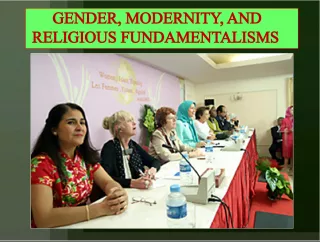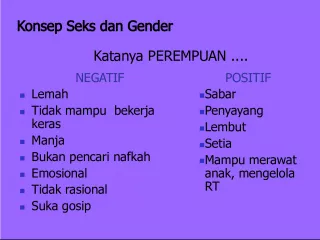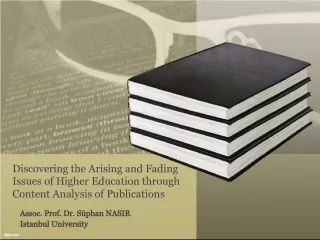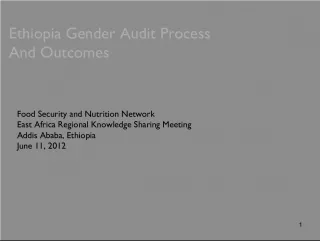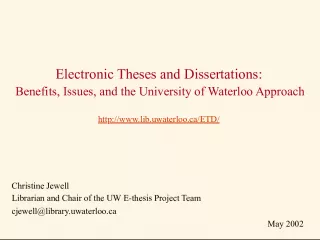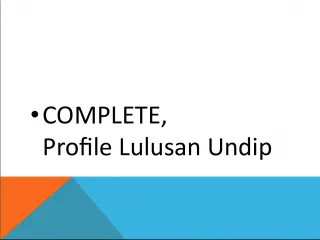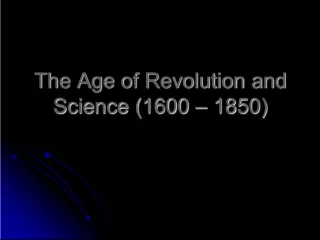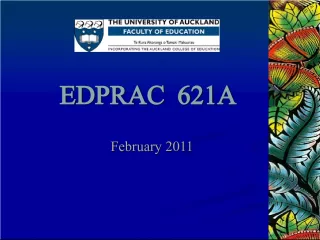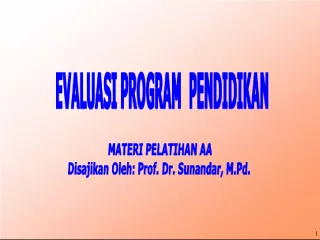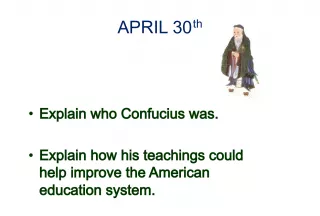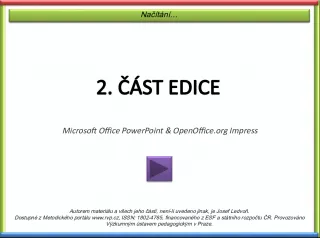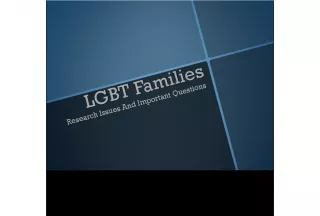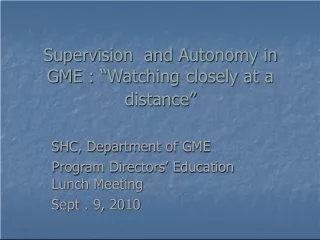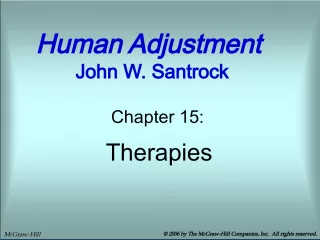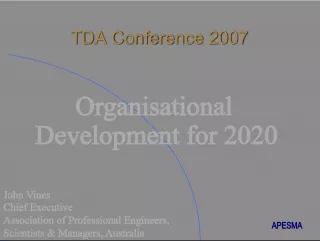Technophobia and Gender Disparity in Education: Exploring the Issues
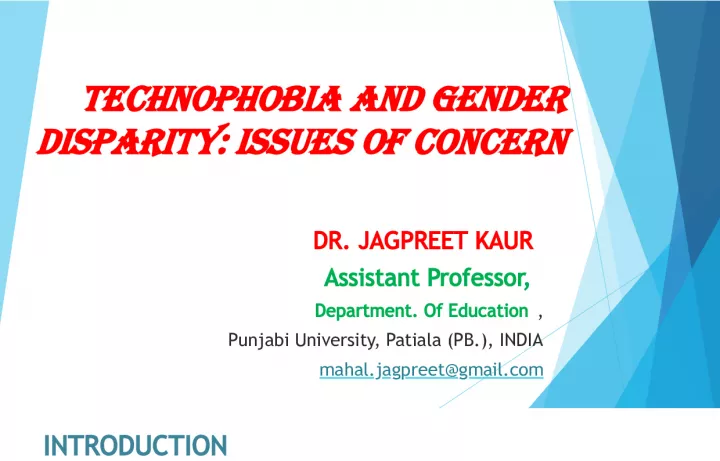

This article examines the issues of technophobia and gender disparity in education, with a focus on the attitudes towards the use of computers, computer-related anxiety, and self-efficacy. It discusses the causes of technophobia, its impact on learning, and the ways to overcome it. It also highlights the gender disparities in the access and use of technology in education.
- Uploaded on | 3 Views
-
 rasmus
rasmus
About Technophobia and Gender Disparity in Education: Exploring the Issues
PowerPoint presentation about 'Technophobia and Gender Disparity in Education: Exploring the Issues'. This presentation describes the topic on This article examines the issues of technophobia and gender disparity in education, with a focus on the attitudes towards the use of computers, computer-related anxiety, and self-efficacy. It discusses the causes of technophobia, its impact on learning, and the ways to overcome it. It also highlights the gender disparities in the access and use of technology in education.. The key topics included in this slideshow are technophobia, gender disparity, education, computer anxiety, self-efficacy,. Download this presentation absolutely free.
Presentation Transcript
1. Technophobia and Gender Disparity: Issues of Concern DR. JAGPREET KAUR Assistant Professor, Department. Of Education , Punjabi University, Patiala (PB.), INDIA mahal.jagpreet@gmail.com
2. INTRODUCTION 1. Technophobia is described as the abnormal fear or anxiety about the effects of advanced technology 2. People who dislike interacting with technology are often referred to as "technophobic 3. Technophobic people have negative thoughts and feelings about technology and they often have a desire to avoid interaction with technology. 4. Technophobia in the present investigation was considered in terms of attitude towards the use of computers, computer related anxiety, computer related self-efficacy .
3. RELATED LITERATURE 1. Technology integration in the learning process is found to improve learning and better prepare students to effectively participate in the 21st century workplace (Butzin, 2000; Hopson et al., 2002; Reiser, 2001). 2. The research on gender and computing has often, although not conclusive, reported that males have more experience and use of computers (Brosnan and Lee, 1998; Balka and Smith, 2000). 1. It has been observed that females also usually have more negative attitudes toward computers (Durndell and Thompson, 1997; Whitely, 1997) and greater computer anxiety (McIlroy et al., 2001) than males. 2. Research on computer self-efficacy in general also revealed that males on average have better computer self-efficacy than females (Torkzadeh and Koufteros, 1994).
4. 1. Attitude towards use of computer is defined as the level of affect one has for computer and thus, they are contented with computer liking as the uni-dimensional perspective of computer attitudes, whereas the rest of the factors are treated as the causal antecedents of this attitude (Ariffin, 2005). Computer-related attitudes influence students desire to use computers, their desire to enroll in computer- related subjects and courses, and their choice of career path. 2. Computer related self-efficacy has been defined as a measure of an individuals judgment of his or her own abilities with computers or an assessment of self-confidence for use of computer (Durndell, Haag, & Laithwaite, 2000). 3. Computer anxiety has been defined as a fear of computers when using one, or fearing the possibility of using a computer (Chua et al., 1999). 4. A high level of computer anxiety, on the other hand, has been negatively related to learning computer skills (Harrington et al., 1990), resistance to the use of computers (Torkzadeh and Angula, 1992; Weil and Rosen, 1995), and poorer task performance among students (Heinssen et al., 1987).
5. Objectives of the Study 1. To study the gender differences in technophobia in terms of attitude towards use of computers, computer related anxiety and computer related self-efficacy among secondary school students. 2. To study differences in technophobia in terms of attitude towards use of computers, computer related anxiety and computer related self-efficacy among secondary school students in relation to type of school. 3. To study the technophobia in terms of attitude towards use of computers, computer related anxiety and computer related self-efficacy among secondary school students in relation to stream of study. 4. To study the technophobia in terms of attitude towards use of computers, computer related anxiety and computer related self- efficacy among secondary school students in relation to academic achievement.
6. Methodology of the Study 1. The study was conducted through descriptive method of research to investigate technophobia among school-going adolescents in terms of attitude towards use of computers, computer related anxiety and computer related self-efficacy. 2. A stratified random sample of 200 school students studying in 10+1 and 10+2 grade in different government and private schools of Patiala district of Punjab was selected giving due weightage to gender, type of school and stream of study. 3. Background Information Sheet was used to collect information 4. Computer Attitude Scale developed and validated by Nickell and Pinto (1986) was used to measure the attitude of students towards use of computers. 5. Computer Anxiety Rating Scales (CARS) by Heinssen et al. (1987) was used to assess the subjects level of computer anxiety. 6. Computer self-efficacy Scale was originally used by Murphy et al. (1989), and was refined by Torkzadeh and Koufteros (1994) was used to assess the computer related self-efficacy of secondary school students.
7. RESULTS The use of t-test was made to find out the significant of differences in technophobia in terms of gender, type of school, stream and academic achievement of secondary school students. Table I: Gender Differences in Technophobia among Secondary school Students Variable Gender t-value Male Female Attitude Towards Use of Computer Mean 66.78 67.97 1.04 SD 8.05 7.65 Computer Related Anxiety Mean 67.29 69.05 1.38 SD 9.46 8.16 Computer Related Self-efficacy Mean 106.91 106.27 0.26 SD 16.88 16.60 *p0.05; **p0.01
8. It indicates that male and female school students do not differ significantly on attitude towards use of computers, computer related anxiety and computer related self- efficacy. These results find support from earlier researches (Ray and Minch, 1990; Fulkerth, 1998; Green, 1998; Sax, Astin, Korn, & Mahoney, 1998; Sam et al., 2005).
9. Table II Means and SDs for Technophobia Among Secondary School Students in Relation to Stream Dimension/ Variable Science (N= 15) Commerce (N=62) Arts (N=33) Mean SD Mean SD Mean SD Attitude Towards Use of Computer 68.9 5.66 66.43 8.02 64.21 8.02 Computer Related Anxiety 75.86 7.66 67.61 7.59 63.42 7.98 Computer Related Self- efficacy 114.3 15.7 104.63 15.5 101.45 17.84
10. Table III : Stream-wise Differences in Technophobia Among Secondary School Students Dimension/ Variable Science- Commerce Commerce- Arts Science- Arts Attitude Towards Use of Computer 1.39 1.29 2.32 Computer Related Anxiety 3.76** 0.52 5.68** Computer Related Self-efficacy 2.14* 0.86 2.51
11. 1. It may be seen from the table III that there are significant differences in computer related anxiety and computer related self-efficacy among secondary school students pursuing science ad commerce stream. 2. Further, significant difference was found in computer related anxiety among science and arts students. 3. However, no significant differences were found in attitude towards use of computers among science, arts and commerce stream students. 4. Also, no significant differences were found in attitude of school students towards use of computers, computer related anxiety and computer related self-efficacy among commerce and arts stream students. 5. The results are in line with the previous studies which suggest that students in the vocational and commercial fields of study had better attitude towards the computer than those in the sciences and arts (Teo, 2008; Adebowale, Adediwura, & Bada 2009; Achuonye and Ezekoka, 2011).
12. Table IV : Technophobia Among Secondary School Students in Relation to Type of School Category Dimension/Variable Type of School t-value Government School (N=91) Private School (N= 98) Attitude Towards Use of Computer Mean 66.61 68.01 1.22 SD 8.12 7.62 Computer Related Anxiety Mean 71.28 64.70 5.52** SD 7.29 9.11 Computer Related Self-efficacy Mean 101.49 110.52 3.90** SD 14.38 17.37
13. Table V : Technophobia Among Secondary School Students in Relation to Academic Achievement Dimension/ Variable High Achievers Low Achievers t-value Mean SD Mean SD Attitude Towards Use of Computer 69.08 8.15 66.80 8.56 1.30 Computer Related Anxiety 64.04 8.32 74.44 7.73 6.13** Computer Related Self-efficacy 114.68 16.90 101.40 16.74 3.75** The table V shows that that there is significant difference in computer related anxiety and computer related self-efficacy among high and low achieving secondary school students. However, no significant difference was observed in attitude towards use of computers in high and low achieving secondary school students.
14. Predictors of Attitude of School Students Towards use of Computers In order to find out the contribution of computer related anxiety and computer related self-efficacy to attitude towards use of computers, a step- wise multiple regression analysis was carried out. Only the values of coefficient multiple correlation (R) determining the total effect of contributing factors, R 2 and R 2 change along with variance in predictors of attitude towards use of computers is reported in the table Table V: Predictors of Attitude of School Students towards Use of Computers Predictor R R 2 R 2 Change % Variance F-value Computer Related Anxiety 0.505 a 0.255 0.252 25% 101.99** *p0.05; **p0.01
15. Educational Implications More seminars should be arranged on ICT for secondary school students pursuing arts and commerce streams to help reduce their computer related anxiety and develop in them a more favourable attitude towards use of computers. In order to enhance the attitude of school students towards use of computers, computer education curriculum should be updated so as to enable the students to grasp and understand the usage and improve their attitude towards use of computers. Motivation should be given to secondary school students to use more and more computers so that they can easily access the computer without any computer related anxiety. The more they will use computer, the more they will gain the computer-related self-eficacy. The students should not be too much dependent on computers; rather their abstract thinking should be developed, as machines have limited functions. The computers should be for knowledge gathering not for knowledge generating, as it is the role of humans. Thus, the intellect of the students should be developed.
16. REFERENCES Achuonye, K.A. and Ezekoka, G.K. (2011) Technophobia among Female Undergraduate Students: A Challenge to Attainment of the MDGs in Nigeria. British Journal of Educational Research, 1(1), 49-57. Adebowale, O.F., Adediwura, A.A and Bada, T.A. (2009) Correlates of Computer Attitude among Secondary School Students in Lagos State, Nigeria. International Journal of Computing and ICT Research , 3(2), 20-30. Fulkerth, B. (1998). A bridge for distance education: Planning for the information age student. Syllabus , 12 (4), 3-5. Harrington, K. V., McElroy, J. C., & Morrow, P. C. (1990). Computer anxiety and computer-based training: A laboratory experiment. Journal of Educational Computing Research, 6 , 343-358. Heinssen, R.K., Glass, C.R., & Knight, L.A. (1987). Assessing computer anxiety: Development of validation of the computer anxiety rating scale. Computers in Human Behaviour, 3, 49-59.
17. Murphy, C. A., Coover, D., & Owen, S. V. (1989). Development and validation of the Computer Self-Efficacy Scale. Educational and Psychological Measurement, 49, 893- 899. Nickell, G. S., & Pinto, J. N. (1986). The computer attitude scale. Computers in Human Behavior, 2 , 301-306. Ray, N.M., & Minch, P. (1990). Computer anxiety and alienation: Toward a definitive and parsimonious measure. Human Factors , 32, 477-491. Reiser, R.A. (2001). A history of instructional design and technology: Part 1: A history of instructional media. Educational Technology Research and Development, 49(1), 53-64. Sam, H.K., Othman, A.E.A., & Nordin, Z.S. (2005). Computer self-efficacy, computer anxiety and attitudes toward the internet: A study among undergraduates in Unimas. Educational Technology and Society , 8(4), 205-219.
18. Sax, L.J., Astin, A.W., Korn, W.S., & Mahoney, K.M. (1998). The American freshman: National norms for Fall 1998 . Los Angeles, CA: Higher Education Research Institute, University of California at Los Angeles Graduate School of Education and Information Studies. Teo, T. (2008). Pre-service teachers attitudes towards computer use: A Singapore survey. Australasian Journal of Educational Technology , 24(4), 413-424. Torkzadeh, G., & Koufteros, X. (1994). Factorial validity of a computer self-efficacy scale and the impact of computer training. Educational and Psychological Measurement, 54(3), 813-921.
19. Thank You
